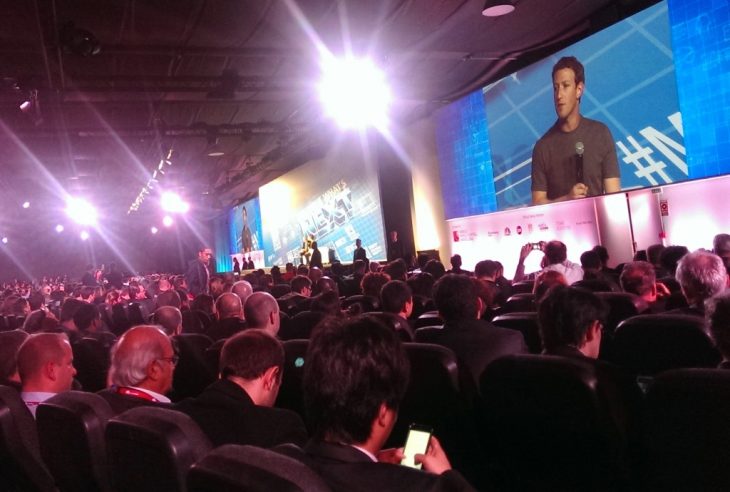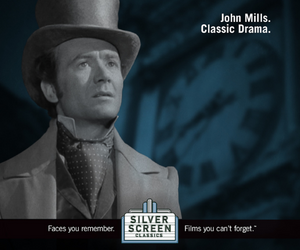
BARCELONA – A new phone for BlackBerry, the Samsung S5 and Samsung wearable Gear updates, the Sony Smartband, more than a dozen smart cars, a number of smart appliances and thermostats. But when you see smart, connected clothing, that’s when it dawns on you that this industry wants to connect everything, literally.
And I’m not using “literally” in the mistaken, teenage way, but the actual way the word is meant to be used.
Whether or not the world’s consumers want everything to be connected, or want to ‘log their life’, to paraphrase Sony, is an unanswered question (I sure don’t, so that’s one “no”) – but before we get to that, it’s worth considering that just getting basic Internet to the two-thirds of the world’s population who don’t have access is a huge problem which needs to be solved.
Facebook founder and CEO Mark Zuckerberg addressed the latter question with an appearance in Barcelona Monday evening, spending an hour in front of a standing-room-only crowd to talk about WhatsApp, of course, but also his pet project Internet.org,
Facebook, along with Ericsson, Nokia, Samsung, Opera, Mediatek and Qualcomm are the founding partners working on a way to make the internet affordable to the world’s poor. While there are about 3.4 billion people connected to the internet already (or just about everyone who can afford it), Zuckerberg noted yesterday that about 80% of the world’s citizens are covered by wireless, but they “don’t know why they would want a data plan” he said, and likely couldn’t afford it anyway.
Zuckerberg professed disappointment at the GSMA’s goal of connecting an additional one billion people to the internet by 2020. “I hope we can do better than that,” he said, while acknowledging "we're really not on the path to connect everyone,” when you have to buy a $500 phone and a $1500 a year data plan to do it.
Internet.org sees connecting everyone as an absolute necessity, but they want to build a business case for it, so it is sustainable as a business, so that those with only a dollar or two a month of disposable income might choose to spend some of it on a data plan and a simple smartphone, such as the cheap smartphone Firefox has built, or perhaps the 29 Euro Nokia 220 we saw on the show floor (below).
However, Zuckerberg acknowledged he is still far away from finding a business plan that works, but that he is in this for the long haul – and he wants partners who will also take a long view because the efforts will lose “millions” for a long time. “I can not construct any model that’s going to add up in the near term,” he said.
Internet.org have launched some pilot projects in Paraguay and the Philippines where initial trials have showed promise. In the regions launched in the Philippines, subscriptions for the local carrier Globe Telecom have risen 25%, according to the Facebook CEO.
The company’s "Value of Connectivity" report suggests that if developing countries could bridge the gap in Internet penetration to reach levels that developed economies enjoy today, they would experience large increases in GDP growth and productivity and improvements in health conditions and education opportunities, providing a clear potential to reduce poverty and promote long-term economic and social development, according to the press release announcing Facebook and GSMA will work together on connecting those who can’t afford a mobile data connection.
********************
THERE CAN BE LITTLE doubt as to which manufacturer is dominant in the mobile space at this moment. It’s still Samsung. It’s massive show floor presence was overflowing with Mobile World Congress delegates dying to get a look at the new flagship phone, the Galaxy S5, as well as the newest Gear 2 and Gear 2 Neo smart watches and Gear Fit bracelets (which force wearers to constantly look at their wrists sideways, right).
To our eyes, all the latest phones and features all blur into one another with less and less meaning at each new launch because the differences between the latest version and the last are simple evolutions in technology (more screen pixels, a bigger megapixel camera, longer battery life, maybe a fingerprint scanner like the new S5). Also, I wonder how large the market will be for these watches and bracelets that must be regularly charged (the line I use is they’ll be popular among the calculator watch-wearing crowd) and will log every step you take, every move you make, checking you in, watching you.
No matter for now, they sure piqued curiosity on the floor of Mobile World Congress. And you can read the official release for each of those gadgets here, here and here.
********************
At the centre of Sony’s booth was its Smartband and an invitation to “log your life.” This light, simple-looking bracelet has but a single button and no screen at  all. You can get it in any colour, so long as it’s black… Well, as you can see from the picture to the right, the company envisions a lot of fashion directions for the wristband, but black is all it has on offer for now, according to its web site.
all. You can get it in any colour, so long as it’s black… Well, as you can see from the picture to the right, the company envisions a lot of fashion directions for the wristband, but black is all it has on offer for now, according to its web site.
It logs “your movements, your communications, your entertainment,” says the Sony release. It’s “wearable technology for wherever you go, around the clock. Log special moments and watch your life played back to you on your Android smartphone or tablet.”
We’ll let the video here tell the rest of Sony’s dreamscape. It doesn’t answer the question why one should log their life, though.
We also found a small Alberta company on the floor, 4iii Innovations, producing its own line of wearable tech, which incorporates in its bracelets much of what’s in the Sony and Samsung wristbands.
*******************
We were surprised, but we shouldn’t have been, to see this little fellow, the Nokia 220 (below), featured prominently in the Nokia booth. It’s not a smartphone and maybe that’s what drew our eye. This 29 Euro feature phone is light, durable, has a 2 megapixel camera, comes with Twitter and Facebook integrated, is a stylish thing that comes in yellow, blue, black, white and red, has a 2.4-inch, 320×240-pixel display, and uses Nokia’s own Express Cloud browser to compress data for fast display on the small screen – and for less impact on the ol’ data plan.
It also has a built MP3 player, video player and FM radio and six pre-loaded games: Asphalt 6 Adrenaline, Assassin Creed, Block Breaker 3, Brain Challenge 3 and Modern Combat 2. The stated battery power is impressive with 13-hour talk time and 51-hours of music playing capabilities with 30-day standby power.
For about $40 bucks, it would be a great starter or second phone for the right customers. Something the right operator could almost give away.
********************
WHILE BLACKBERRY DOESN’T have an official presence on the show floor, it used the Mobile World Congress to make a bunch of announcements. The one getting most notice is the announcement of a new phone coming later this year, the Q20, which will go back to offering the much-loved 'Menu', 'Back', 'Send' and 'End' buttons and the integrated trackpad to enable the fast efficient navigation and one-handed use that has endeared the brand to its QWERTY customers.
"In my first 90 days on the job, I consistently heard from our ardent BlackBerry customers that the hard buttons and trackpad are an essential part of the BlackBerry QWERTY experience, that made their BlackBerry smartphone their go-to productivity tool. I want these customers to know that we heard them, and this new smartphone will be for them," said John Chen, executive chairman and CEO at BlackBerry, in the press release. It was one of 10 announcements the company made Tuesday.
*******************
THERE WERE SO many smart, connected cars on the floor that it’s easy to see the days of a DVD player, or an iPod dock will soon go the way of a tape deck. The Telefonica booth had a Tesla, the Connected Home pavilion had a BMW and a Corvette, GM and Ford had their own booths, Qualcomm had a BlackBerry QNX-powered Mercedes-Benz, and we saw Opels and Volvos too, but forget where.
The niftiest connected car had to be the prototype Ford Fusion featuring new technology from Velodyne, an autonomous navigation (self-driving) company, that lets the car see what is around it at all times with four spinning doohickeys. We tried to take a photo of the demo, but it just didn’t do it justice, so have a look at this video of a car with “complete situational awareness."
*******************
THE SWEATIEST DEMO we saw was in the Connected City by a company called Cityzen Sciences, which demonstrated its smart, connected, shirts (they call it the D-shirt…) via a trio of basketball players juking and shooting on an indoor court. With connected clothing, you wouldn’t need any of the bracelets or watches we mentioned above.
During and after a workout, users can know their heart rate, speed, maximum aerobic speed, the distance they ran, and the height differences of their run and from the data, the yet-to-be-launched app will be able to inform the wearers of the amount of calories burned and their level of fatigue, according to the company.
The sensors which monitor the wearer’s vital signs are actually in the fabric and transmitted in real time to their smartphone or another device (okay, like a smart watch).
See, the industry is actually, literally, going to connect everything.



